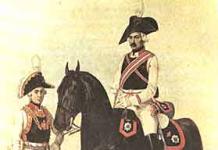Lexicology as a science. Question about the lexical system of the Russian language. Systemic relationships (for example, synonymy, homonymy, antonymy, etc.). Lexical-semantic groups of words (LSG).
Vocabulary – This is the vocabulary of a language.
Lexicology is a science that studies vocabulary. A distinction is made between descriptive (synchronic) vocabulary, which studies the historical development of vocabulary, and historical (diachronic) vocabulary, which studies the historical development of vocabulary.
Tasks of lexicology:
· Studying the meanings of words;
· Studying the connotations of words;
· Studying the stylistic characteristics of words;
· Study of historical changes in vocabulary, etc.
The lexical system is a system of interconnected units. No word exists in relative isolation from its general nominative system. Words are combined into different groups based on certain characteristics.
There are two types of relations in the lexical system of a language: 1) paradigmatic relations in groups of words united by common features (glass ball); 2) syntagmatic relations are systemic connections that manifest themselves in regular combinations of words with each other (syntagma is a set of two or more words combined based on compatibility rules).
In the lexical system of a language (LSL), words can be combined based on:
1. commonalities and opposites (synonyms, antonyms...).
2. stylistic similarity.
3. community of origin.
Words can be combined into classes based on belonging to one category (objectivity, attribute, action). In the lexical system of a word language, both the simplest subsystems and more complex ones can be formed.
Lexico-semantic group (LSG) – This is a set of words belonging to the same part of speech, united by intralingual connections based on interdependent and interconnected elements of meaning. Members of the LSG are connected by certain semantic-paradigmatic relationships (homonymous, thematic, synonymous, etc.). The basis for creating an LSN is the word (the basic component with all its lexical-semantic variants).
The main features of a word as a significant unit of language. Identity and separateness of the word. Difficulty defining a word. Lexical meaning, concept. Structure of lexical meaning. Denotation, significat.
Word is a completely formed unit of language, representing, as the basic unit of the lexical system, the totality of its grammatical forms in all available meanings.
Signs of the word:
· Nominativity (a word is capable of naming objects, qualities, actions, etc.);
· A word consists of a number of phonemes and has a phonetic design;
· A word has form and content (form is the sound expression of a word, and it is customary to call it a lexeme); the content plan is the meaning of the word, which is usually called sememe;
· Sound and meaning are constant, because form and content are fixed in language; words are impenetrable: another word cannot be inserted inside a word (exception: negative pronouns);
· Words can be stressed, single-stressed, multi-stressed and unstressed;
· All words belong to different parts of speech and have certain grammatical forms;
· The word has the attribute of isolability, i.e. words that are not combined with other words retain their meanings;
· The word is reproducible.
The problem of word identity includes 2 aspects:
1. Questions about whether different grammatical forms belong to one word. F.F. Fortunatov considered each grammatical form to be a separate word; therefore, a certain criterion limited inflection from word formation. It was difficult to put forward the criterion of the objective attribution of a word, thus, if different forms of words can indicate the same object, then they form one word (inflection). If the subject assignment changes, these forms belong to different words (word formation).
2. The question of whether different uses of one sound set belong to one word is associated with the definition of criteria for limiting polysemy and homonymy (A.A. Potebnya considered each use of a word in a new meaning to be a separate word); the solution to this problem is associated with taking into account the etymology and the degree of preservation of the connection between different lexical meanings of the word.
Lexical meaning of the word – this is a reflection in the word of the phenomena of reality (V.V. Vinogradov). LLS is a correlated sound complex of a linguistic unit fixed in the minds of speakers with one or another phenomenon of reality; most words name objects, their characteristics, quantities, actions, processes and act as full-meaning independent words, performing a nominative function in the language. The meaning of a word reflects only various characteristics, i.e. those with which you can distinguish objects from each other.
Structure of lexical meaning:
1. Symeological aspect. Meaning as a reflection of linguistic reality in it as a sign.
2. Structural-semantic. Meaning as the semantic organization of a word.
3. Functional-style aspect. Meaning as a reflection of the sociolinguistic attitude to the word.
Denotation– the objective meaning of a word, denotes the volume (class) of serial (or unique) phenomena of reality and serves as the name of the objective correlation of the word. Denotation characterizes a class of homogeneous objects in the broad sense of the word (table - a type of furniture) and covers the scope of the concept.
Significate– reveals essential features, phenomena of reality, constitutes the content of the concept.
Connotation– this is an additional meaning to the main lexical one. (Brother - the son of parents, in relation to other children of these parents; Brother - with tenderness, affection; Bro - ...). Connotation includes 4 aspects:
1. emotional;
2. expressive;
3. stylistic;
4. evaluative.
All 4 aspects, or maybe just one, can be realized in a word.
LEXICAL MEANING AND CONCEPTS.
Words in the language are divided into significant and non-significant.
Non-nominal ones are particles, prepositions and conjunctions.
The object of lexicology is only significant words.
It is significant words that have a nominative function, i.e. a word is the minimum unit of language capable of highlighting a separate thought. Based on the definition that a word is a sound unit of human speech, denoted by the phenomena of reality, in their dismemberment, grammatically formulated and equally understood by the number of people speaking the same language, it can be argued that the main function of a word is the naming function.
All significant words have this function except pronouns. Pronouns have a demonstrative function.
Each word correlates with certain concepts; it is this correlation that is usually called LZ. An important ability of a word is the ability to generalize; this is an important function of generalization. To generalize, whole groups and classes are called. Concepts are formed in our minds under the influence of the surrounding world. Objects and phenomena are named according to the characteristic that distinguishes them from other objects.
A feature placed in the category of distinctive or differentiated is characteristic not only of specific objects, which is why the general differentiated feature performs the function of generalization.
We must remember that an equal sign cannot be put between a word, its meaning and concept, i.e. the meaning of the word and the concept are not the same. A concept can be expressed by a combination of words. For example, a railway, a globe. One concept can be expressed in different words (synonyms) (hand - arm). One word can express several concepts. The meaning of a word may have additional characteristics; the meaning can be broader than concepts.
3. Types of lexical meanings: according to the method of nomination, according to the degree of semantic motivation, according to lexical compatibility, according to the function performed.
Comparison of various words and their meanings allows us to distinguish several types of meanings in the Russian language:
1. According to the method of nomination, direct and figurative meanings of words are distinguished. DIRECT is a meaning that directly correlates with the phenomena of objective reality: does not depend on the context and on the nature of the properties with another word. PORTABLE is a meaning that arises as a result of transferring a name from one object to another. Direct and figurative meanings are defined within one word. Different meanings of the same word are called lexical-semantic variants (LSV).
2. Based on the degree of semantic motivation, motivated and unmotivated meanings are distinguished. UNMOTIVATED - these are meanings that are not determined by the meaning of morphemes in the word. MOTIVATED - these are meanings that are derived from the meaning of the derived stem and word-forming affixes. The degree of motivation for the same word can be more than one.
3. If lexical compatibility is possible, they are divided into free and non-free. FREE - are based only on subject-logical connections of words, but cannot be combined with words such as stone. Lexical compatibility is called valence in the scientific literature. There are monovalent words (limited combinations). Words with monovalent combinability are called collocations. Collocations tend to be stable, but in the category of stable combinations, i.e. phraseological units are not included yet. UNFREE words are characterized by limited possibilities and lexical compatibility, which in this case are also determined by subject matter.
Lexemes. Sememes. Semy. Family types
Sema is usually called the minimum unit of meaning.
Lexical meaning- this is the totality of the family.
Token is the plane of expression.
Sememe is a content plan.
The combination of a lexeme and a sememe represents the word as a whole.
A seme is divided into its constituent semes:
· Classeme – expresses the attribution of a word to a class or category.
· Lexogramme - this seme expresses the grammatical meanings of a word.
· Hyperseme – the attribution of a word to any gender.
· Hyposeme – expresses the attribution of a word to a certain type (the main thing in determining a hyposeme will be the presence of differentiating features that distinguish one type from another).
· Connotative seme – expresses the presence of additional meanings in a word.
· Potential seme – expresses the presence of certain possibilities in a word: explicit (explicit) and implicit (hidden).
· Probabilistic seme – shows the presence of associative connections, potential and occasional possibilities in a word.
EXAMPLE: Lily
1. noun.
2. feminine, singular, 1st declension, nominative case.
3. flower.
4. white color, with a distinct smell, a garden flower.
5. royal sign.
6. female name.
Related information.
Component Analysis - as part of oppositional analysis (method of semantic research or opposition method). It arose in phonology (Trubetskoy), then in grammar (Bulygina). With the help of this analysis, units are contrasted and identified according to semantic features - semes, and is a method of semantic analysis and synthesis. Task- division and ordering of LZ. Each language consists of semantic components and the vocabulary of the language can be described using a limited number of typical semantic features.
Prerequisites: 1) construction of universal descriptive languages (metalanguages), 2) creation of ideographic dictionaries (Roget, Dornzeit, Casares), 3) attempt to identify the limiting elements of the plan of creation (Helmslev).
Principles: 1) description of the meaning of a word through a finite set of elementary semantic units - components (Lomtev refuted - CA is closed within narrow lexical limits, is not able to create a universal unlimited alphabet to describe the semantic structure of the language as a whole), 2) components are independent of specific linguistic representations (Lomtev refuted - the components of different languages are not universal), 3) the idea of semantic components as conceptual ones (of a conceptual system).
Objects: 1) microstructure - the meaning of one word, 2) macrostructure - thematically similar fields and spheres.
Katz saddled up with an attempt at word analysis bachelor (1966). Further Foser, Bervish, Kuznetsov (1971), Naida (1975).
Each LSV represents a hierarchical organized structure of families:
1. Archisema- generic, integrating seme, characteristic of the entire class (it is also the name of the semantic field)
2. Differential seme - specific semes, which denote semes at the species level (what distinguishes two words).
3. Integral sema - generic semes (what two words are similar to). Archiseme and differential and integral semes are in genus-species relationships (hyper-hyponymic).
4. Potential (contextual) seme - important for the formation of figurative meaning, reflects the phenomena of associative connections with the designated object (father is the source, the beginning of something - the father of geometry)
Metalanguage- a language of the second level (zero - the objective world, first - natural language), necessary to designate signs of language and describe natural language, although it consists of natural elements. Obtained by compression natural language and obtaining semantic primitives. Semantic primitives- simple, primary structural elements of natural language (Werzbicka, Apresyan). Semantic primitives: 1) artificial words-constructs of the exact sciences, 2) words of natural language with simple meanings (cannot be further divided, finite), 3) intermediate concepts are reduced to simpler ones. Metalanguage syntax- unnatural syntax, syntax of semantic graphs.
Sema (from Greek sema - sign)
a term denoting the minimum unit of the language plan of content (See Plan of content) (elementary lexical or grammatical meaning), correlating with a morpheme (See Morpheme) (the minimum significant unit of the plan of expression (See Plan of expression)) and representing a component of its content. For example, in the word form “book” the morpheme “-у” contains three S.: “singular”, “feminine” and “accusative”. Sometimes the concept of seme is interpreted as syntagmatic (see Syntagmatics), in contrast to the paradigmatic (see Paradigmatics) concept of seme (See Sememe). Some scientists define S. as a semantic feature by which larger units of content are contrasted, for example, the lexical content of the word “father” is described as a set of S.: “direct relative,” “male,” “first ascending generation,” etc. .
Great Soviet Encyclopedia. - M.: Soviet Encyclopedia. 1969-1978 .
Synonyms:See what “Sema” is in other dictionaries:
- [gr. sema sign] lingual. minimum unit of meaning, SEMANTIC multiplier. Same as semema. Dictionary of foreign words. Komlev N.G., 2006. sema (gr. sema sign) linguistic. unit of meaning, semantic multiplier. New dictionary of foreign words. by… … Dictionary of foreign words of the Russian language
- (from the Greek sema sign) the minimum unit of content in the language, a component of the seme... Big Encyclopedic Dictionary
Noun, number of synonyms: 6 hyperseme (1) unit (830) feature (36) ... Dictionary of synonyms
SEMA- (from Greek sēma – sign). Concept and term of linguistics and psycholinguistics; minimum unit of content plan. S. is an elementary reflection in the language of various aspects and properties of designated objects and phenomena of reality... New dictionary of methodological terms and concepts (theory and practice of language teaching)
sema- sema. Pronounced [sema]... Dictionary of difficulties of pronunciation and stress in modern Russian language
Sema- (from the Greek σῆμα sign) the minimum, limiting unit of the content plan. Semes are elementary reflections in the language of various aspects and properties of designated objects and phenomena of reality. Sema is an operational unit... ... Linguistic encyclopedic dictionary
Let's look at a number of words: birch, oak, spruce, aspen, poplar, fir, pine. They all represent tree species. Word tree– a general name (hyperonym) in relation to the words of this series, and each of the words in the series is a hyponym in relation to the word tree.
How are such hyper-hyponymous relationships established? How, what semantic components differ from each other between the words that make up the given series?
Analyzing the meanings of words that name tree species, we find in these meanings common semantic components (semes) for all these words and specific ones inherent only in the meaning of this word. Common semantic component for word meanings birch, oak, spruce, aspen, fir, pine, poplar is the semantic component (seme) “tree”: the interpretation of each of these words is impossible without indicating that this natural object belongs to the class of trees.
The semantic component (seme) “tree”, inherent in the meanings of all the words under consideration, is called integral semantic component, or integral seme. The same semantic components (semes) by which the meanings of words—names of trees—differ from each other are called differential semantic components, or differential semes.
In our example, two groups of trees are clearly distinguished: deciduous ( birch, oak, aspen, poplar) and conifers ( spruce, fir, pine). The semantic component “deciduous tree”, present in the interpretations of words of the first group, is common and integral to the meanings of these words. At the same time, it serves as a distinctive feature, opposed to the semantic component “coniferous tree,” common to the meanings of words of the second group.
Thus, each of the families “deciduous tree” and “coniferous tree” is, on the one hand, integral for the words of “its” group and, on the other, differential, distinguishing the meanings of words of this group from the meanings of words naming trees of a different species.
A higher, general seme, characteristic of the entire class of words and distinguishing this class from others, reflecting the general content of the entire class in abstraction from differential semes, is called archiseme. Archiseme, as a rule, is also the name of a semantic field.
The seme that is important for the formation of figurative meaning, reflecting the phenomena of associative connections with the designated object, is called potential (contextual, connotative) seme.
According to L.P. Krysin
Questions
1. What are differential semes?
2. What are integral semes?
3. What is an archiseme?
4. What is a potential (contextual, connotative) seme?
Exercise 3. Using explanatory dictionaries, in the meanings of the words below, highlight integral and differential semes, and also name the archiseme.
Chair, shelf, sofa, chest of drawers, sideboard, armchair, bed, couch, stool, wardrobe.
Topic 18.
Procedure for component analysis of lexical meaning
The initial object of analysis is words taken out of context, taken in their specific conventional meaning. The component representation of the meaning of a word has the form of a product of semantic components, the order of which is not specified in any way. This version of component analysis is called vertical-horizontal analysis meanings. His procedure involves comparing the meanings of words in two dimensions:
- in vertical, when values at different levels of the hierarchy of genus-species relationships are compared, i.e. meanings of hypernyms with meanings of hyponyms;
- in horizontal, when values of the same level of hierarchy are compared, regardless of whether they are in a relationship of incompatibility, complementarity or antonymy.
The procedure for vertical-horizontal analysis is illustrated using the example of the word magazineʻmagazineʼ. The procedure is divided into 5 stages.
Stage 1: define that unit of meaning that includes the meaning of a word magazine, i.e. in other words, find the closest hyperonym for this word. Its meaning will be the desired component of meaning. For English speakers this will be the meaning of the word periodical periodical.
Stage 2: find those units that can be considered included in the meaning of the word, i.e. see what the meaning of its hyponyms is. For native speakers these will be hyponyms slics, pulps, comics etc.
Stage 3: the study of units of the same hierarchical level that are found with a value of interest regarding incompatibility or intersection. These are first of all words book book, pamphlet pamphlet, newspaper newspaper, journalʻmagazine (mainly scientific)ʼ. The meaning of the word magazine is contrasted with the meanings of the words book, pamphlet, brochure based on periodicity. For word meanings magazine, journal, newspaper this sign is integral. Magazine opposed newspaper as a bound or bound publication. Contrasting magazine – journal, we determine that the publication called journal, is usually more specialized in its content (for example, scientific journals).
Stage 4: compiling a list of those minimal diagnostic components (semes) that, firstly, distinguish the meaning of a word magazine from other meanings of the same level, secondly, they allow it to be adequately included within the framework of the nearest higher meaning and, thirdly, they satisfactorily cover the meanings of its hyponyms. In our case, these will be three components: “periodical”, “bound or bound” and “quite popular in content and design”.
Stage 5: final, consists in formulating the definition of a word based on its diagnostic components. Such a definition usually includes an indication of the class to which the meaning belongs (in fact, an indication of the meaning of the nearest hypernym), and significant contrasts with adjacent, intersecting and complementary meanings.
The variant of component analysis that we have just examined is typical for a certain stage of development of this method. What are the characteristic features of this stage?
1. individual, isolated words are analyzed taking into account the paradigmatic relationships between them, but without taking into account their syntagmatic connections.
2. The representation takes the form of an unorganized set of semantic components or, at best, an ordered sequence of components.
3. As a consequence of the previous sentence, all components, or semes, are recognized as identical in their logical nature.
This elementary version of component analysis was developed using material specific vocabulary, in this area it gives acceptable results.
For abstract vocabulary, the vertical-horizontal analysis procedure is not applicable and a procedure is needed analysis of intersecting values, the essence of which is to turn to the consideration of words not in themselves, but phrases with this word. Let us illustrate them using the example of the word beautiful.
Stage 1: find words close to a given meaning, i.e. words from the same semantic field that can be used in relation to the same objects or events: beautiful Beautiful, pretty attractive, lovelyʻcharmingʼ, etc.
Stage 2: identifying a range of objects that can be described using selected words. In this case, an effective method is not to list hundreds of acceptable attributive phrases with given words, but to find contexts in which one or another unit is either completely unacceptable or looks unusual or strange. This is called analysis of negative language material.
| man (man) | ||
| | woman (woman) | |
| handsome |  | building (building) |
| *lake (lake) | ||
| *scene (scene) | ||
| *jewel (decoration) |
| | cottage | |
| pretty | *skyscraper (skyscraper) | |
| jewel (decoration) |
Stage 3: the goal is to identify those aspects of similar meanings on which their opposition is based. The most effective technique is to place quasi-synonyms in the same context. So, comparing beautiful woman"beautiful woman" pretty womanʻpretty womanʼ we discover that beautiful expresses a greater degree of quality intensity than pretty. Comparing beautiful old lady With lovely old lady, we see that physical (external) attractiveness is necessarily included in the meaning beautiful, but not necessarily for lovely, which emphasizes some pleasant quality, not necessarily associated with special advantages of appearance. Comparing beautiful woman And handsome woman, we will see that in the meaning handsome the component of majestic appearance and ideal proportions occupies a central place. In the word beautiful the central component is the general impression of the object, and the second of the named components of the word handsome in meaning beautiful only implied.
Stage 4: listing the essential features of a word by which it is contrasted with its quasi-synonyms:
1) attractiveness;
2) general appearance;
3) to a fairly high degree.
So, in the example considered, we see that to identify the semantic structure of abstract vocabulary we, willy-nilly, turn to analyzing a word in context(phrase, sentence) and use our ability to evaluate linguistic expressions, firstly, as correct or incorrect, and secondly, as meaning the same thing or unequal.
It is equally important to present the identified semes not as kit, even if ordered, semantic components, but how structure, i.e. education that has a very specific organization. Those. the meaning of a word should be represented as structure consisting of elements of meaning and syntactic relations connecting them.
According to I.M. Kobozeva
Questions
1. What stages does the vertical-horizontal analysis procedure include?
2. What are the disadvantages of vertical-horizontal analysis?
3. What stages does the intersecting analysis procedure include?
4. What is the merit of intersecting analysis?
Topic 19.
Seme and semantic field.
As popular definitions show, already at an intuitive level a connection is revealed between the component structure of meaning and the semantic field in which this meaning is realized. For example, if we take the definitions of domestic animals (“horse” = “four-legged animal” + “neighs”, “cow” = “four-legged animal” + “moos”), the field name is in the definition itself. The analogy between the structure of the semantic field and the component structure of the seme is emphasized by O. Dukhachek’s term “seme field,” used to denote the relationship of semes within a seme.
Such an analogy, however, should be treated with caution, since there are as many differences as there are similarities. The similarity is manifested mainly in the representative function of semes and sememes: an integral seme represents a sememe in the same way that units of a semantic field represent the semantic category that unites them (field identifier). However, if in the first case a more primitive substance (seme) represents a more complex substance (seme), then in the semantic field, on the contrary, a more primitive substance (identifying seme) is represented by sememes that are more complex in structure. In addition, differentially semes within a seme are not opposed in structural oppositions, like elements of a semantic field, i.e. do not enter into paradigmatic, syntagmatic, derivational and other relationships. Finally. semes, understood as elements of lexical meaning, do not have a clear and constant form of expression, in contrast to semes, which are necessarily represented in terms of expression by lexemes.
At the same time, the semantic field and component representation of meaning are based on a single theoretical position about the structural organization of the lexicon, the semantic units of which are interrelated and interdependent.
The integration of component and field approaches in linguistic semantics necessarily leads to a clarification of the main initial ideas of each direction, and the field approach benefits most from this integration. Thus, the use of the component approach helped to establish that semantic fields are not separated by rigid barriers and reveal spheres of attraction and repulsion due to the presence of common and differential features; in semantic fields, central and peripheral spheres are distinguished, while the center is more consolidated, representing the entire semantic complex; on the contrary, in peripheral areas semantic connections are more weakened, forming zones of semantic disturbance, the elements of which signal connections with other semantic fields.
Consequently, the organization of units of the semantic field can serve as the basis for identifying semantic components. The reverse procedure can also be assumed. Most of the semantic relations within the semantic field, as mentioned above, are derived from component analysis and determined by it. The reverse transition is carried out, for example, when comparing taxonomy levels, i.e. branches of the semantic tree.
According to S.G.Shafikov
Questions
1. What are the similarities and differences between the component structure of the sememe and the semantic field?
2. How does component analysis help in identifying the structure of a semantic field?
3. What properties of the semantic field did the method of component analysis allow us to clarify?
Seme is the smallest unit of meaning of a word. Seme - the inner side of the word, the meaning of the word, consists of seme. There are archiseme (generic seme) and differential seme (distinguishing a given object from others). A glass is a vessel for drinking, cylindrical in shape, made of glass without a handle. Semes are divided into: nuclear (it is by nuclear forces that objects are combined into concepts); peripheral (probabilistic, unstable features of an object create imagery, expressiveness). The components of lexical meaning are distinguished: decorative (the most important, understandable, logical, reflects general conceptual features); connotative (evaluative in relation to the subject, has microcomponents - emotional, expressive, evaluative); Empirical (figurative have a sensually-visual image). Types of lexical meanings are classified according to relevance to reality(straight - tree branch, portable - railway line); by degree of motivation(non-derivatives - tree branch, derivatives - railway branch); by lexical compatibility(free - black crow, non-free: phraseological (white crow), syntactically conditioned in a figurative meaning, the position of the predicate is used, constructively - limited in a figurative meaning and in the genitive case, according to the nature of the function); according to the nature of the function (nominative - a crow caws, expressive - you are talking nonsense).
30, Unambiguity and polysemy of a word. Types of polysemy. Metaphor.
Most terms refer to unambiguous words (medical terms: gastritis, colitis). The unambiguity of a word is opposed to its polysemy.
Lexical polysemy (polysemy) is the ability of one word to serve to designate different objects and phenomena of reality.
Head (the upper part of the human body or the front part of the animal's body, containing the brain; direct, not derivative, free, nominative). In the meaning of the unit of livestock counting, it is figurative, derivative, not free, constructively limited, nominative - synecdoche.
Mind, consciousness, reason. He has a clear head (figurative, derivative, free, expressive) - metonymy. About a man of great intelligence. He is the head (figurative, derivative, not free, syntactically conditioned, expressive) - synecdoche.
Leader, chief, head of some business. The head of the whole matter (figurative, derivative, expressive) is a metaphor based on location.
Without a head - about a stupid person. With your head - about smart (figurative, derivative, not free, expressive) - metonymy.
There are 2 types of transference: metaphor and metonymy. Metaphor: this is the transfer of a name based on the similarity of external features, location, shape of objects, as well as the functions performed. The concept in linguistics is broader than in literary criticism. Types of metaphorical transfer: Transfer from living to non-living and vice versa - a warm day and a warm look, a golden ring and a golden soul, an evil person and a golden evening; Transfer by similarity of functions - the key to the door is the key to the trap; transfer by location – head – attic, basement – article; Transferred by external similarity - a hand and a bunch of grapes. Paths are built on the basis of transfers: hyperbole (exaggeration), litotes (understatement), epithet (figurative exaggeration), periphrasis (name based on characteristics).
31, metonymy and its types
Metonymy is the second type of transfer after metaphor, a more productive transfer and is more common due to the economy of speech means. Transfer is carried out from material to product; from the name of the process to its result (test of pen); from action to scene (transport stop); from the container to the contents (dish - first course); from the form of expression of the content to the content itself (a thick book is an interesting book); from the branch of knowledge of science to the subject of science; from the location of a settlement to a population of residents; from the event to its participants; from organization to employees, premises; from the name of the company to the company itself; transfer to invention; from the emotional state to its cause (horror - fear).
32, Lexical homonymy and its stylistic use
Homonymy is the coincidence of words, forms and morphemes. Lexical homonymy - words that are spelled and sound the same, do not have a sem and are not associated associatively (a key is a spring and a master key to a door; marriage is a flaw and matrimony). There are complete and incomplete homonyms. Full - the same part of speech, the entire system of forms is the same (shop - a bench and a commercial premises, a colony - a forcibly captured country and a community of fellow countrymen). Incomplete homonyms - words of the same part of speech do not coincide in all forms (tact and tact - the second member of the homonymous series does not have a plural form). A homonymic series consists of 2 or 3 words. More numerous rows are rare (pyramid). Homonym words relate to phenomena of reality independently of one another; there is no connection between them. Mixing lexical homonyms during their implementation is not possible. Reasons for its occurrence: 1) disintegration of the polysemantic core (one word disintegrates and becomes different); 2) homonymy as a result of the coincidence of a sound, Russian and foreign word; 3) words from different languages and having different meanings are the same in the Russian language in pronunciation and spelling; 4) there may be different words that come from the same language; 5) coincidences are associated with historical changes in the phonetic system of the Russian language.


























